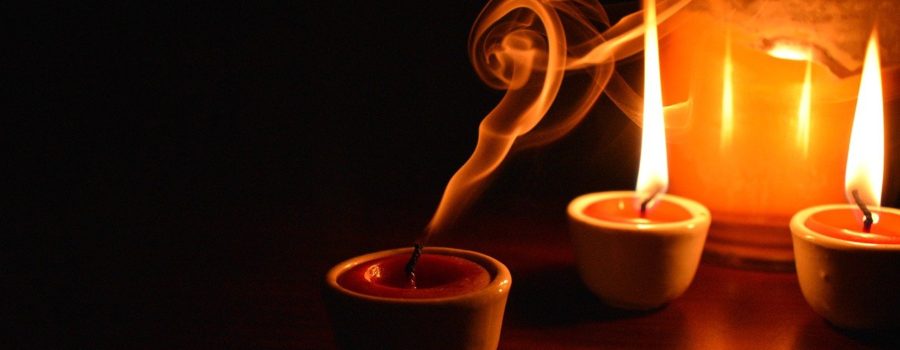Is it Healthy to Burn Candles in Our Homes?
A comment/question from one of my previous Facebook posts was about candles and I thought would be useful to go into more details here. I know how trendy candles are nowadays and many people really like to use them for many occasions. Is it healthy to burn candles in our home, though?
I for one, never liked being around lit candles. Don’t use them at home and in the restaurants I request not to have the candle lit if there is one on the table. If already lit, I ask them to take it away when we get seated.
The first reason why I don’t like lit candles is that I usually get headaches around them. Moreover, their artificial smell for me is too strong—to the point it makes me nauseous. After I learned additional details, I’m glad I’ve been avoiding them and I have more reasons to continue. Here is why.
The wax
Back in the day, the candles were made of beeswax but after a while paraffin became the main component. Paraffin is a petroleum by-product that releases carcinogens like benzene and toluene when it burns, along with other volatile organic compounds (VOCs).
If not familiar with this term, VOCs mean gasses emitted when burning certain materials (gasoline, coal, wood, etc), or by compounds that evaporate easily at room temperature—fragrances for instance, either synthetic or from natural sources.
Back to burning paraffin candles, the resulting soot contains particles that can be irritating, especially for people with asthma and other respiratory conditions, or for those with allergies.
Less toxic candles are made from vegetable wax, usually soy, palm, more recently coconut, and even rapeseed—canola wax. These still produce soot with respiratory irritant particles while burning. Moreover, although it may say it’s made of vegetable wax, some paraffin can still be used in the mix!
The wick
Most of us probably believe—I know I did, the wick is made just of cotton, but in reality this is wrapped around a metal support and until 2003 guess what that metal was? LEAD! Imagine, burning lead! This produces lead poisoning, to which young children are most vulnerable and the symptoms are non-specific, making it difficult to link them from the beginning with lead poisoning.
Failure to thrive, stomach pain, loss of appetite with weight loss, irritability, headaches, learning difficulties are just some of them. In 2003 the use of lead in wicks was banned in the US and replaced with zinc or tin (also known under the chemical name of Stannum). Apparently when burning, these can also produces small amounts of heavy metals.
Colors and scents
Colors are obtained with synthetic dyes. The chemicals released by burning these along with any wax can’t be harmless either.
As for scents, other synthetic chemicals, usually phthalates are used, that’s why they are so strong. I hate to even pass through candles’ isles in stores. Some measurements showed these candles emit all kind of VOCs (including formaldehyde—notoriously linked with allergies and asthma), alcohols, esters, among others.
They do release VOCs even when not lit. This doesn’t come as a surprise to me, I knew they must emit something that makes the smell so intense around the areas where they are displayed. More interesting is that paraffin wax releases benzene even when not burning.
Scents can be obtained from essential oils, which many say they have heath benefits. However, just the fact the essential oils are derived from natural sources doesn’t mean they’re harmless. They too release VOCs even when not burning.
If you have a bottle of essential oil of any type and you leave the top off for a while, that scent fills the room. That’s why people with asthma and allergies who noticed sensitivity to scents should be wary about essential oils as well, not just about the synthetic fragrances.
Very small amounts of these oils have to be used, something like half an ounce per pound of wax. If you find a brand with a stronger equivalent scent—lavender for instance—probably more oil was added and that’s not necessarily a better product to use.
Less toxic candles
Now we know better what we’re exposed to when we plan to create a pleasant mood before taking a relaxing bath or entertain guests at a dinner table. Are there better alternatives? Here is what it’s worth talking into account:
- Candles made with 100 percent beeswax are safer and available, although way more expensive that those made from
 paraffin.
paraffin.
- Coconut wax—the new kid on the block, is a better choice for us and the environment, being obtained from sustainable sources.
- Other vegetable waxes used may be a safer alternatives to paraffin, although these too have a dark side. Soybean oil/soy wax derives from GMO crops that require higher amounts of more toxic pesticides (glyphosate), with enough residues remaining in the plants.
- Other option would be palm oil—although palm oil extraction is one of the most non-sustainable practices.
- Rapeseed oil/wax seems a reasonable choice, but not too much is known at present.
The bottom line
Even when using candles from vegetable wax, the particles from soot may still be bothering people with allergies and asthma. To diminish this, wicks should be very short (1/8 inch).
If essential oils are used for the scents, it’s better than the synthetic fragrances, but still not ideal. Here again, people suffering of asthma and allergies should be extra careful.
Indoor air quality is affected anyway when burning all type of candles, especially if this happens often.
And last but not least, the label should say lead-free.
Possibly, unscented 100% beeswax or coconut wax (occasionally mixed), are your best bet safety-wise and they both produce a pleasant, characteristic fragrance.
There are other ways to create a pleasant odor in your home by using essential oils in diffusers, ring burners, or incense sticks. Some people prefer essential oils when taking a bath or for aromatherapy. Like with anything we do, there are pluses and minuses with these approaches as well. Essential oils will be the topic of a new post and I will emphasize some less known facts.



